Serendipity Arles Grant 2023-24: Image-Making as Social-Political-Personal Praxis
The photographic carries with it the burdens of indexicality and truth value, a sphere that has been subject to distortion and propaganda. Contending with contemporaneous image-making, artists at the Serendipity Arles Grant show revisit the empirical or documentary notions embedded within the photographic by undermining the very values that are associated with it. Spanning deeply personal narratives of memory, identity, migration and loss, the second iteration of the grant for 2023–24 reflects multivalent testimonials to image-making. From the personal archive as a testament, to the violent suppression of dissent and of the right to exist by the state, from the artist statement as an abstract document in networks of capital, to the slippage of ecological ruin at a rapid pace, the grantees traverse the limits of materiality in the photographic.
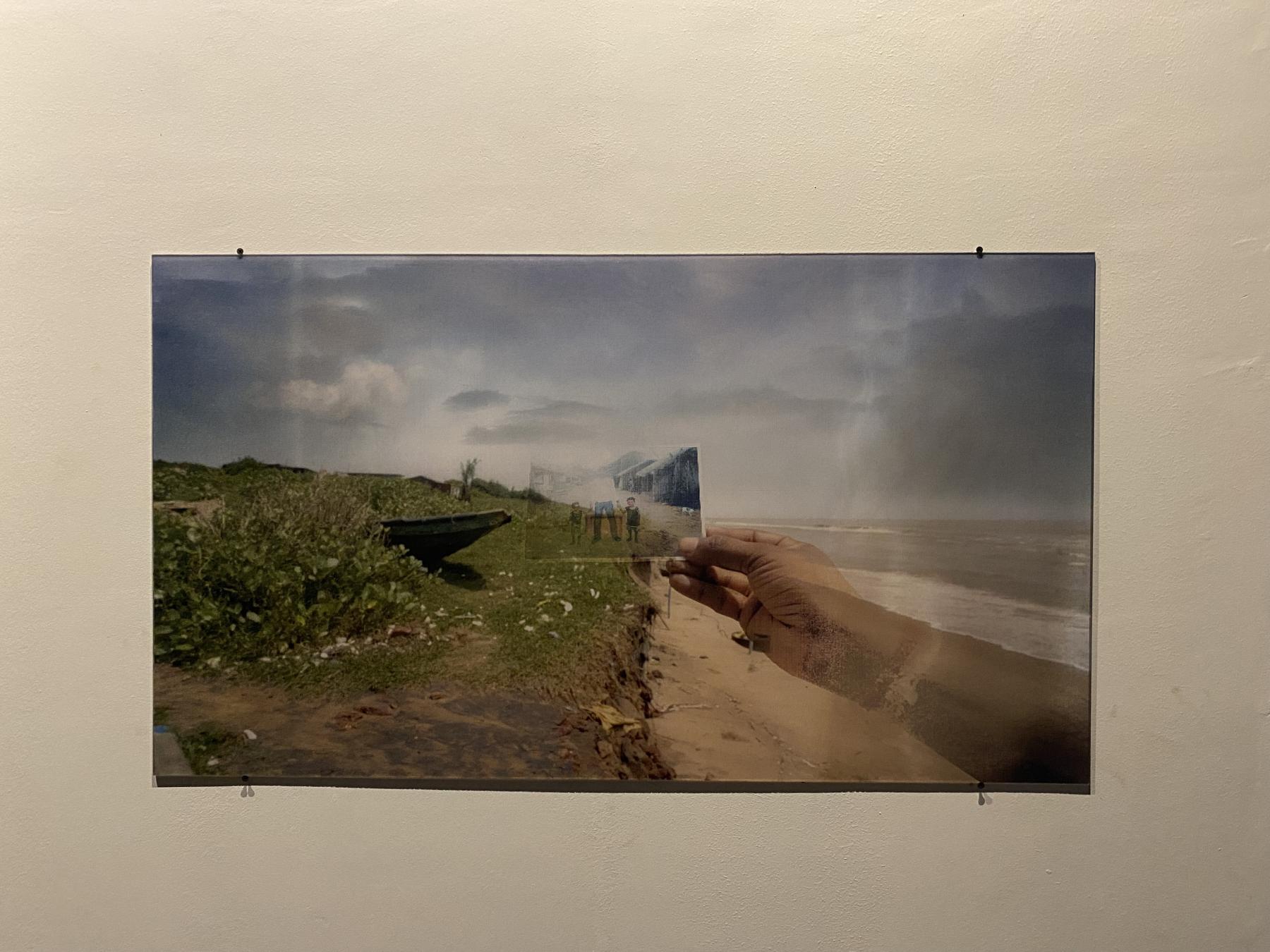
Installation view of A Fate’s Brief Memoir (2022–23) by Paribartana Mohanty.
Instituted by the Serendipity Arts Foundation and the Les Rencontres d’Arles, with support from the Institut Français de Inde, the Serendipity Arles Grant supports projects in photography, video and new media art from South Asia in two phases. The first phase consisted of five finalists, who received support to realise their proposals. The final grantees—Bunu Dhungana, Mridul Kanti Goshami, Paribartana Mohanty, Reshma Teelar and Sandeep TK—exhibited their projects at the Old PWD building as a part of the 8th Serendipity Arts Festival until 23 December 2023. The finalists were selected by a jury consisting of artists Sunil Gupta and Sheba Chhachhi, along with curators Pascal Beausse and Christoph Wiesner. The committee deliberated on a "winner" of the final grant until the very last minute. The jury went around the exhibited works on the morning of 16 December, and as mentioned by one of the jury members during a conversation, the varying perspectives of stretching the limits of image-making were evident in the shortlisted works.
The showcase opens with Sandeep TK’s work, titled Toy Boy from Malabar and His Journey to Wine, Cheese and Chocolates, which plays with the idea of the artist statement and the prevalence of jargon that alienates emerging artists that create work outside of existing networks. As one of the primary documents accompanying a body of work, an artist statement is often considered crucial as it can dictate whether an artistic work garners support or not. Through a series of staged portraits, Sandeep’s images invert the consumption of curatorial notes with the rituals of "wine and dine" that are a common feature of most gallery and exhibition openings. The othering performed through the staged photographs is also a comment on queerness as it exists or is expected to assimilate through established modes of urban jargon, derived from the artist's own diary entries when he first began his practice.
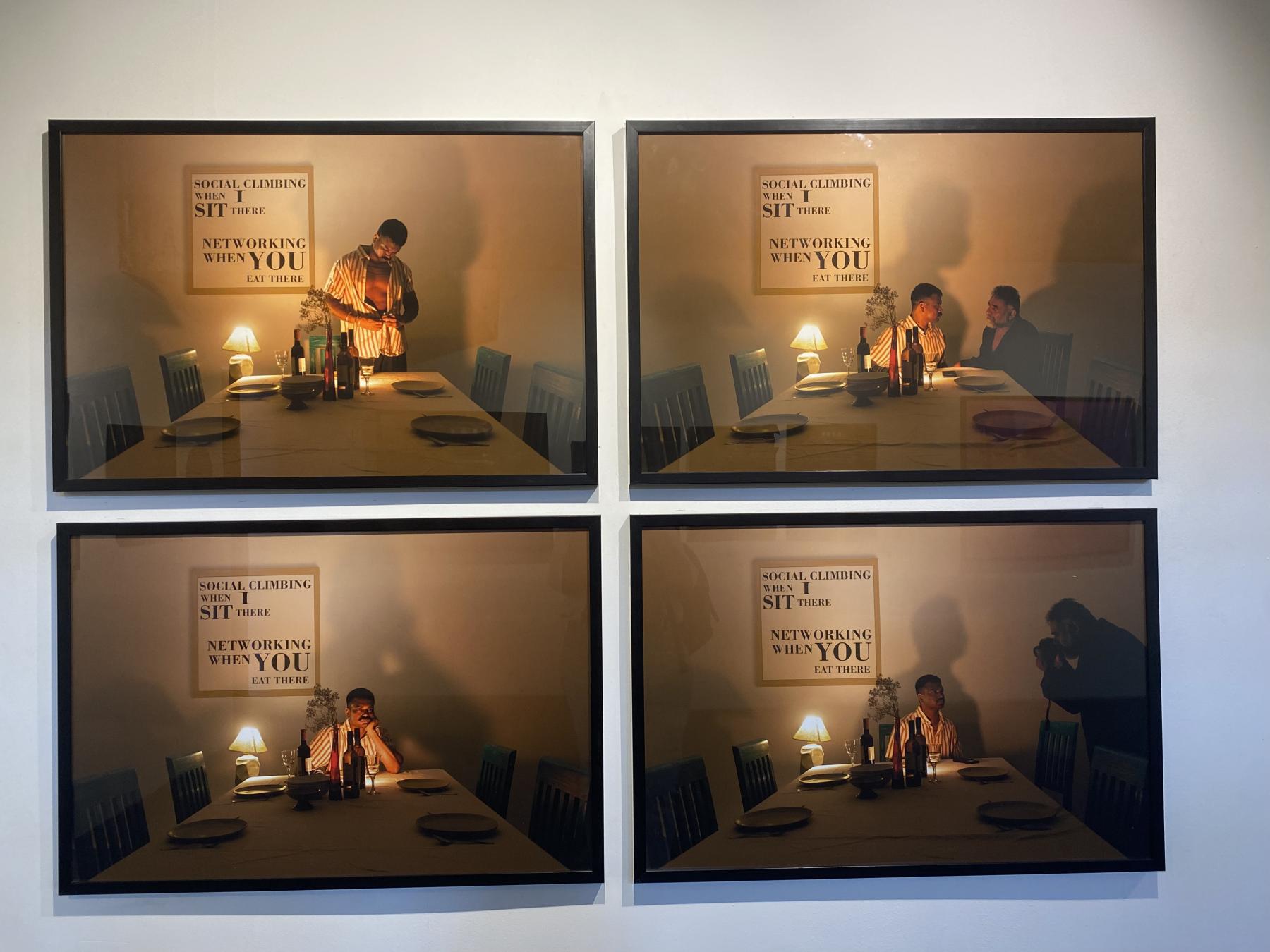
Installation view of Toy Boy from Malabar and His Journey to Wine Cheese and Chocolates by Sandeep TK.
Traces of Her by Bunu Dhungana revolves around the women who participated in the Jhapa Andolan in the 1970s. Consisting of a series of photographic portraits of some of the women involved, Dhungana also situates the carceral violence enacted on the revolutionaries and the forgotten histories of women involved in the rise of a Maoist people’s movement in Nepal. The room recreates a communist office, complete with a desk and chair, with painted images of Maoist and Communist leaders hung on the wall above. The glass top sealed the passport-size photographs of the women, while their present-day portraits have been hung on the opposite wall with small captions to identify them or their relatives. Accompanying the still images was a small black box with the first cut of a film about the forgotten histories of the women involved.
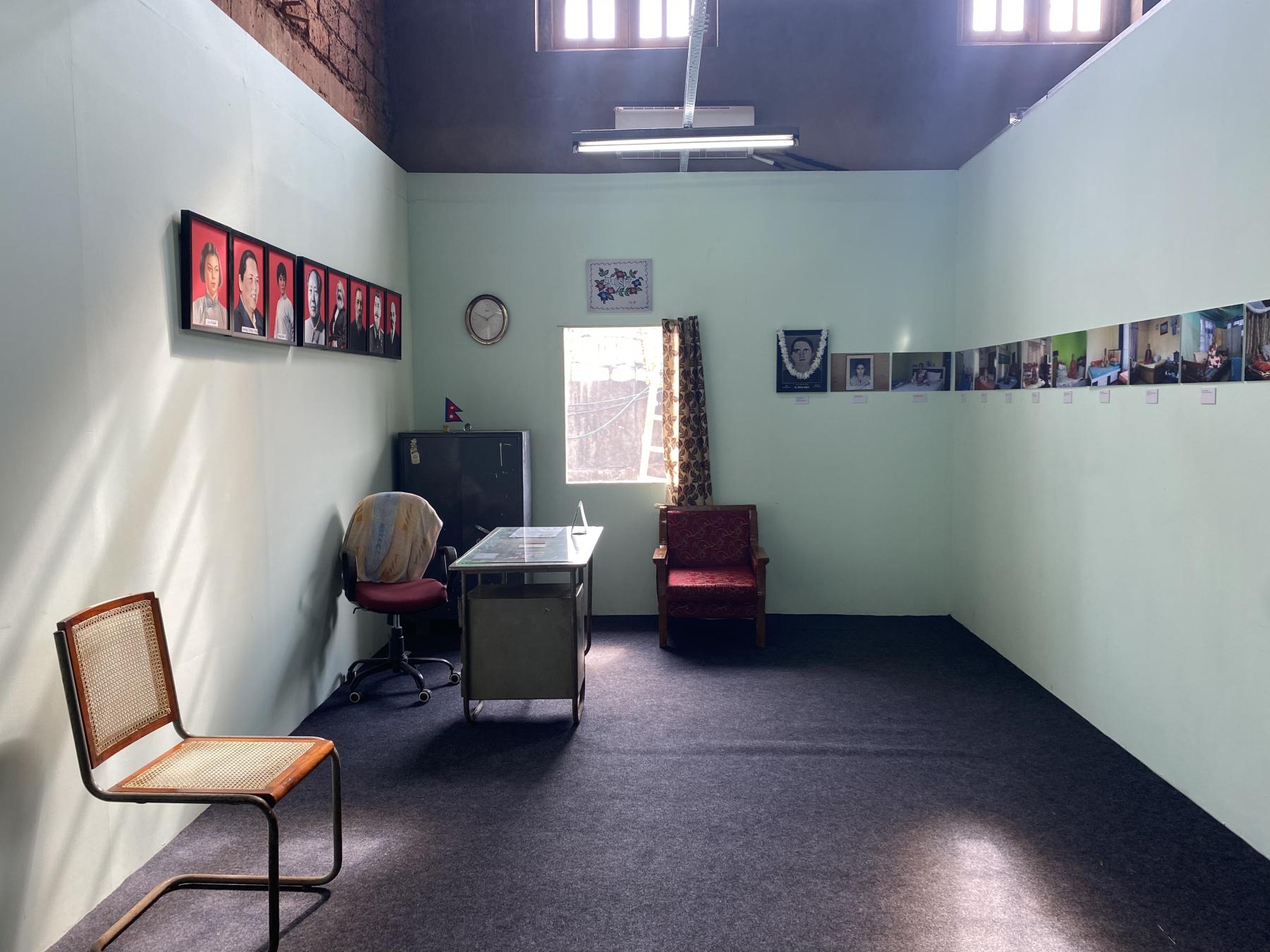
Installation view of Traces of Her by Bunu Dhungana.
In the third adjoining space, Mridul Kanti Goshami exhibited his visual diary, both as prints and styled as an accordion with photographs, accompanied by personal anecdotes written by the artist. Prisoners of Love emerged out of a sense of urgency. Following the brutal institutional murder of prominent Bangladeshi LGBTQIA+ activists Xulhaz Manan and Mahbub Rabbi Tonoy in 2016, Goshami set out to create a living archive of the community. Premised as a visual diary, the work consists of both digital and analogue images, also presented in the form of Polaroid images, with a mix of both traditional portraits of individuals and queer couples shot in black and white. The colour as well as the abundance of the images give it the visual effect of an archive, melding together scenes of intimacy in domestic spaces with those shot in public. Some of the Polaroid borders contained annotations acting as a testament to love as an act of dissent.
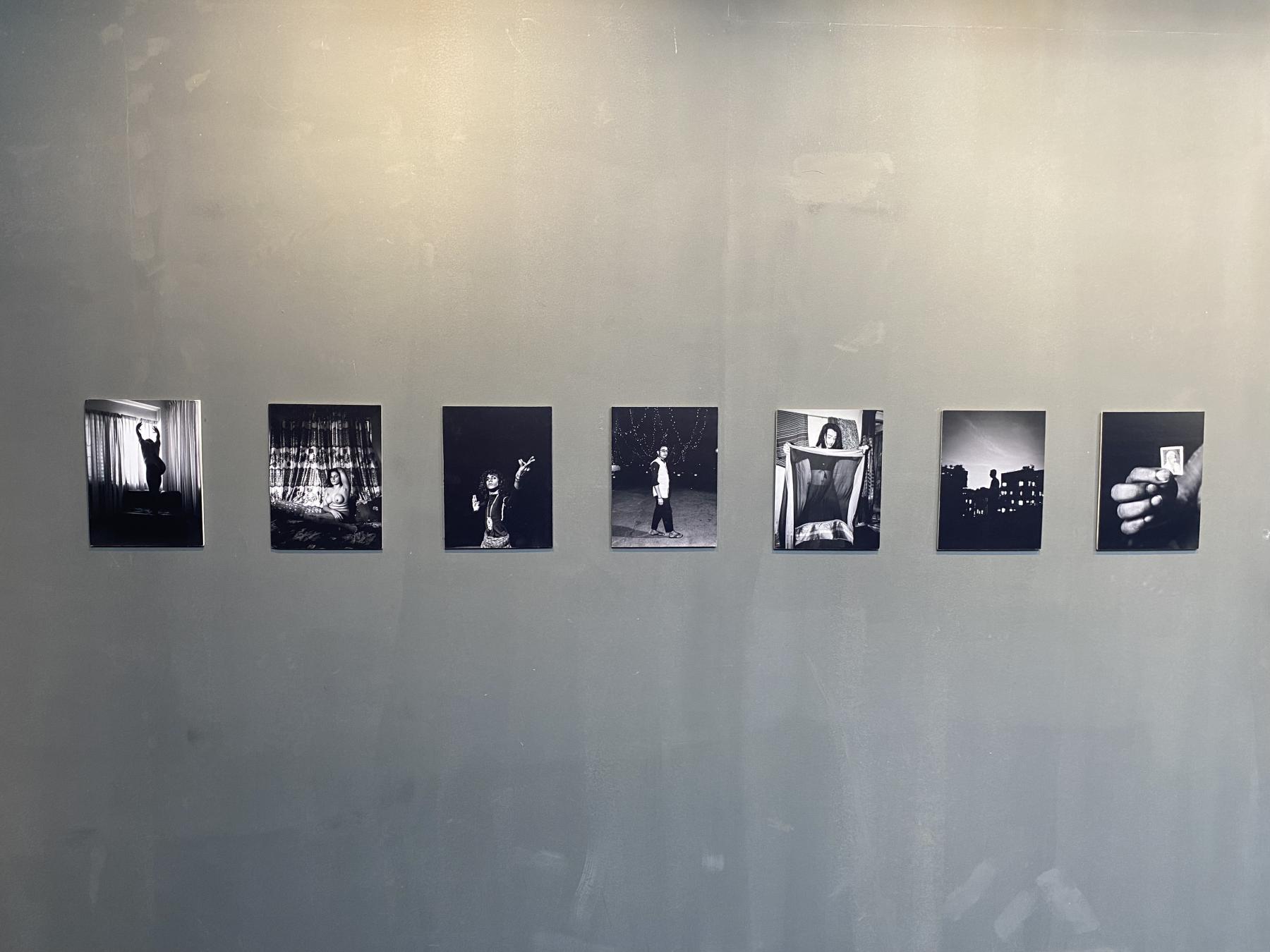
Installation view of Prisoners of Love by Mridul Kanti Goshami.
On the first floor of the complex, Mother Beloved by Reshma Teelar recreates a living area, almost akin to multiple cabinets of curiosities. The walls contain torn pages pasted directly on the wall, framed prints, multiple images of Mary, paintings and photographs of Teelar’s mother in grainy monochrome. Framed on the wall alongside the set-up of a living room, complete with a dining table filled with rotting and moulding food and cabinets scattered with family photographs and ephemera, the images reflect almost the otherworldly perspective of the artistic subject. A mediation on Teelar’s own relationship with her mother, who has schizophrenia, the work is both a documentation of her illness and a mediation on Teelar’s coming to terms with her mother. A celebration of a life lived through uncertain and complex realities, the work is a gentle invitation into the deeply personal experience of motherhood.

Installation view of Mother Beloved by Reshma Teelar.
At the far end of the first floor is a room that exhibits two works by Paribartana Mohanty. A screen in the middle of the room plays a video titled Ocean Mud Pickle (2023). A speculative video work around the village of Satabhaya, Odisha, the film interrogates the unknowable possibilities of what the village, submerged by the Bay of Bengal, might transform into as a result of the changed environment. The artist explores this through a mix of archives, cartographic maps and personal memory. Employing Dasakathia, a folk art form, Mohanty’s work presents the speculations of Satabhaya’s future—beyond land—as it becomes a habitat submerged in the sea through a musical. The accompanying still image series, A Fate’s Brief Memoir (2022–23), takes the form of lenticular prints, which alter the image when viewed from different angles. Through the optical illusion of lenticular images, Mohanty presents the disappearing figures of fisherpeople and other coastal farmers who are forced to become climate migrants due to widespread environmental disasters in Odisha. The prints are accompanied by a ghostly archive of climate migrants through an installation of a carousel slide projector, displaying the images.
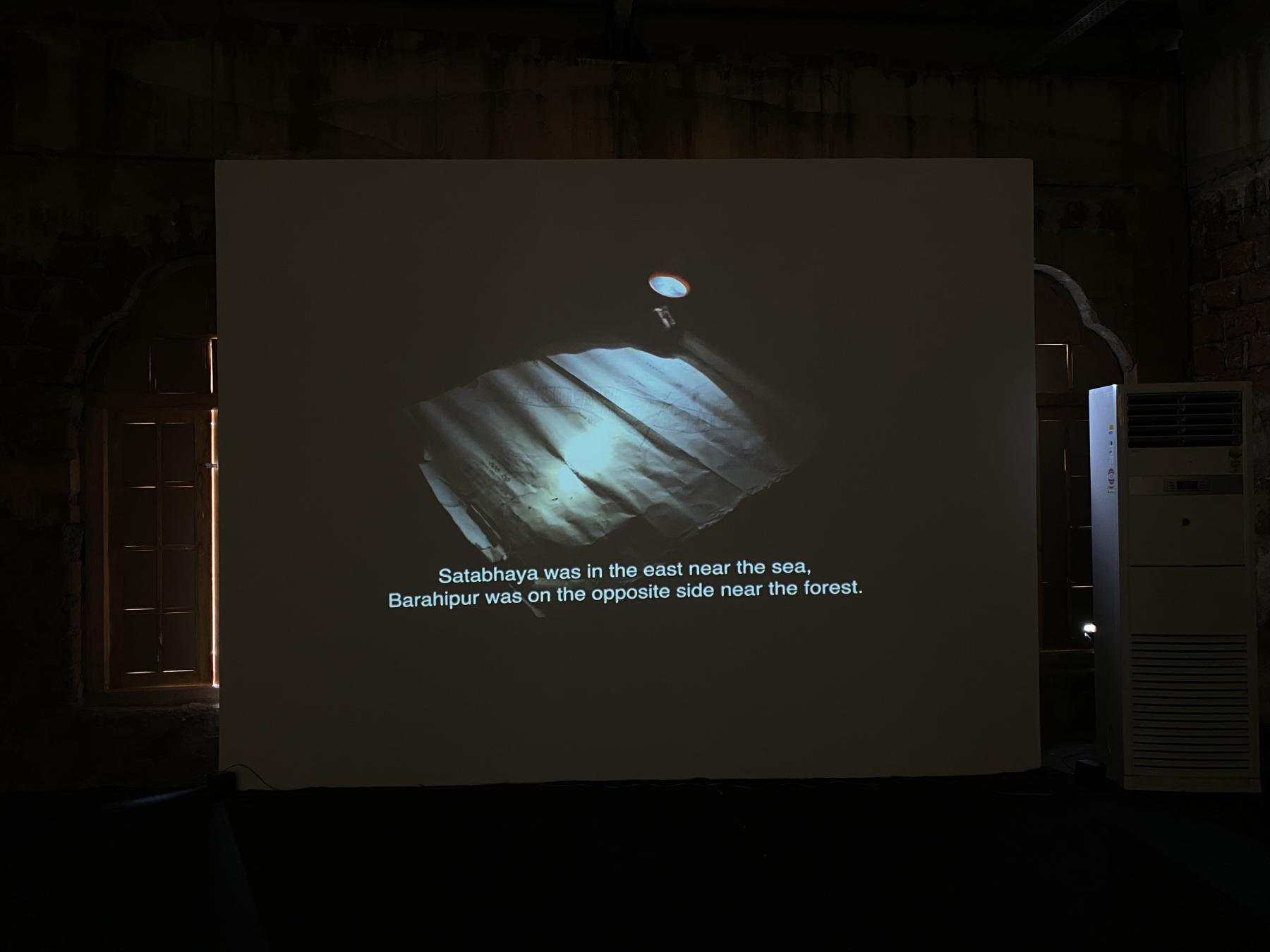
Installation view of Ocean Mud Pickle (2023) by Paribartana Mohanty.
The grant jury declared Mohanty the winner of the grant, with a special mention to Dhungana and potential support for the development of a photobook for Goshami. Underscoring the difficulty of selecting a single winner, the committee’s own deliberation till the very last minute perhaps reflects the difficulties of assessing a single mode of lens-based image-making. At a time when artists involve techniques that are both old and new, from the blown-up digital print to the intimacy of instant analogue photographs, the age-old questions that practitioners engage with remain ever-present and urgent in contemporary lens-based practices today.
All images courtesy of the artist unless stated otherwise.
To know more about the visual arts programming from the 2023 Serendipity Arts Festival, read Annalisa Mansukhani’s interview with curators Vidya Shivadas and Ravi Agarwal, as well as Arundhati Chauhan’s interview with Veeranganakumari Solanki on their respective exhibitions. See also our In Person videos, where members from The Packet and participating artists take us through HOLY FLUX! and Shalmali Shetty's video walkthrough of her exhibition from the festival.
To know more about the South Asian photographic practices exhibited at the Les Rencontres d’Arles 2023, read Sukanya Baskar’s interview with Tanvi Mishra and Riti Sengupta, Annalisa Mansukhani’s interview with Soumya Sankar Bose, Sukanya Deb’s interview with Vishal Kumaraswamy and Mallika Visvanathan’s conversation with Matthieu Orléan.




